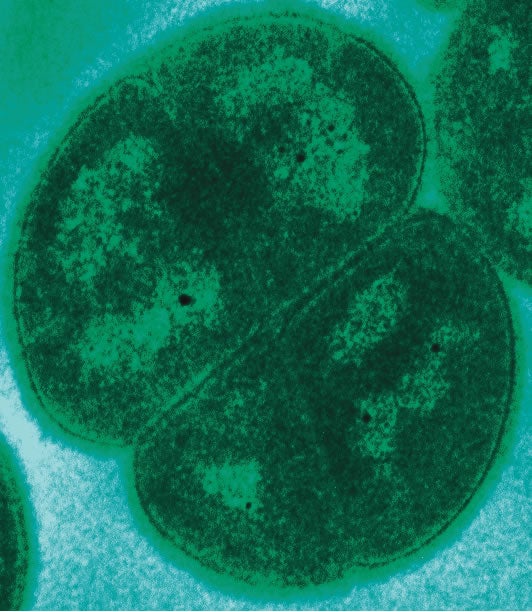Ancient bacteria could have survived just beneath the Martian surface for much longer than previously thought, according to a new study published today in Astrobiology.
That’s good news for missions like ExoMars, the Mars Life Explorer, and the Perseverance rover. All of these missions are designed to look for evidence of past life or habitable conditions on the Red Planet.
But what kind of life could arise and survive in a harsh place like Mars, which today is arid, freezing, and blasted by cosmic radiation? Sure, the Mars of the past had a thicker atmosphere and liquid water flowing on its surface, but for billions of years now, it’s been a desolate place.
In the new study, the researchers tested the effects of desiccation (the removal of moisture), freezing, and simulated cosmic radiation on six species of microorganisms. All of that was to simulate the hostile environment of the Red Planet.
“If Martian life ever existed, even if viable lifeforms are not now present on Mars, their macromolecules and viruses would survive much, much longer,” said Michael Daly, a pathologist at the Uniformed Services University of the Health Sciences and a co-author of the study, in a Northwestern University release. “That strengthens the probability that, if life ever evolved on Mars, this will be revealed in future missions.”

The microbes were hit with varying levels of radiation, to simulate radiation levels at and just beneath the Martian surface. Among those organisms was Deinococcus radiodurans, a remarkably durable microbe affectionately known as “Conan the Bacterium” for its hardy constitution.
D. radiodurans managed to survive 140,000 grays of radiation, a big jump from the 25,000 grays it was previously known to handle. (For comparison, prolonged exposure to about 5 grays of radiation is lethal to humans.) D. radiodurans’ longevity on Mars would increase dramatically if it were buried beneath the surface, the scientists found. Ionizing radiation on the Martian surface would kill the microbe after a few hours of exposure, but about 4 inches (10 centimeters) beneath the surface, its survival period would extend to 1.5 million years. About 33 feet (10 meters) beneath the surface would prolong the microbe’s survival to about 280 million years, the researchers found.
Based on how the oldest-known fossils on Earth developed, scientists think that, if life ever existed on Mars, it likely would have developed in regions like Jezero Crater, which contains a dried-up river delta. NASA’s Perseverance rover is exploring this delta and collecting rock samples, in hopes of finding evidence of ancient microbes. Those samples will eventually be brought to Earth, where scientists can examine them up-close for signs of past life.
The findings of these experiments don’t imply that microorganisms still live on Mars today; water hasn’t flowed on the planet’s surface for at least 2 billion years. But they boost hopes that some type of bacterial life could have survived on the planet, even as conditions became less hospitable.
Any sample return mission will have to be careful of contamination, the researchers stressed, of either Mars or Earth. Thankfully, given the time and cost invested in Mars missions, space agencies are exceedingly careful. And the sample return mission is a must-do for advancing our knowledge of Mars beyond what can be done on the planet’s surface.
More: NASA and ESA Change Plans for Ambitious Mars Sample Return Mission
